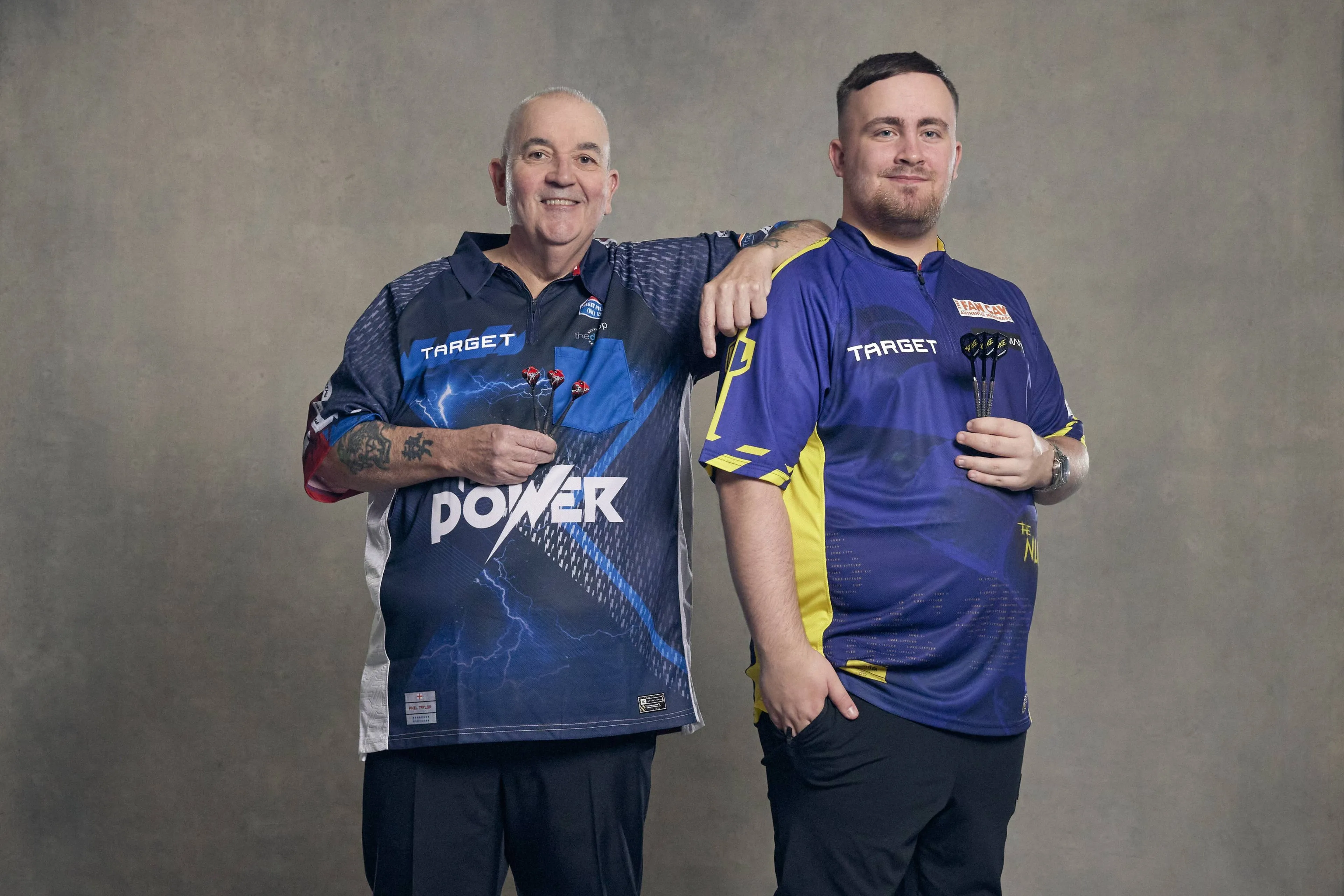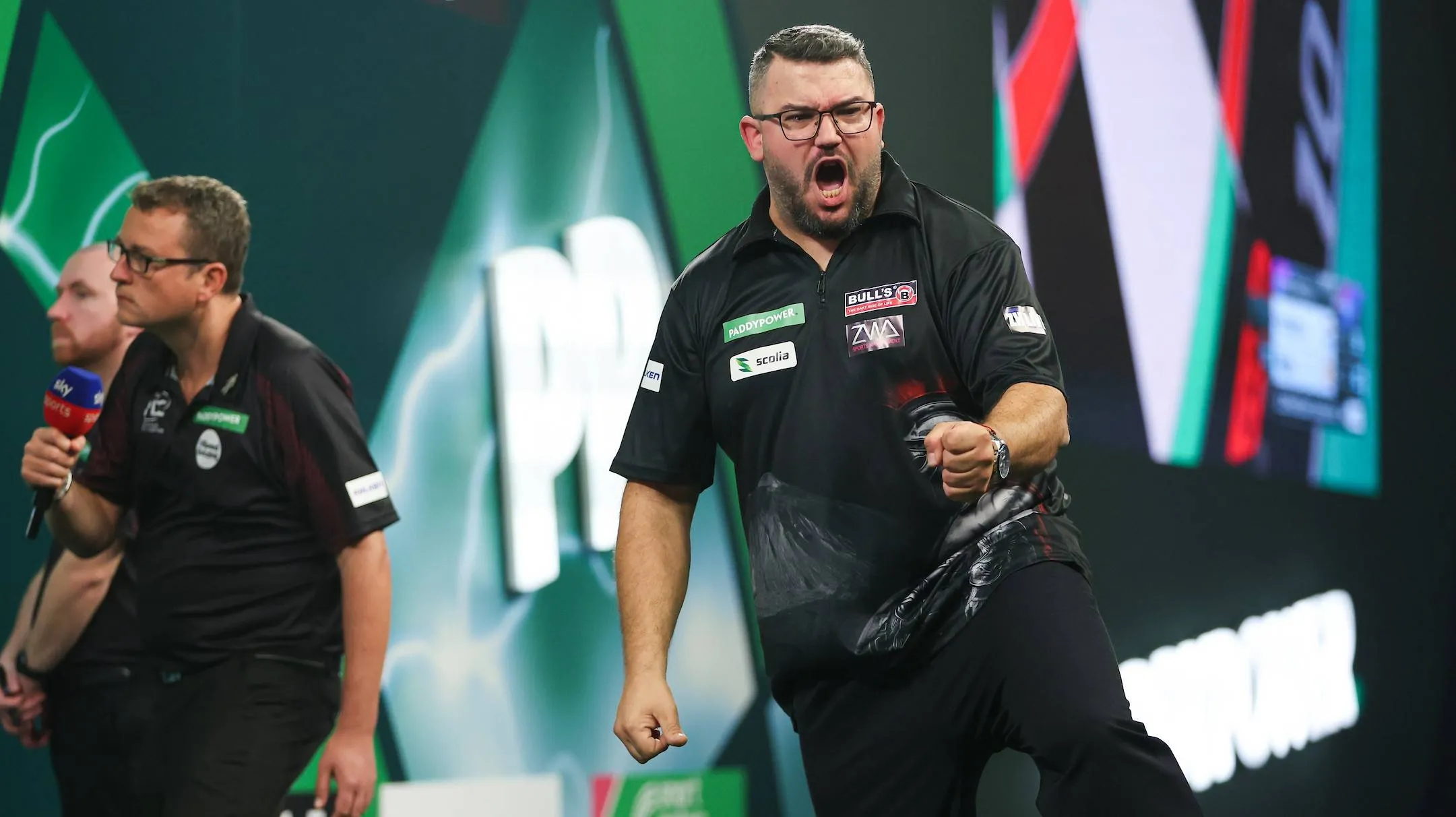How pressure from opponents affects 100+ finishes: PDC statistician dives into the numbers
PDCMonday, 07 April 2025 at 21:09

In his latest column, PDC statistician Christopher Kempf delves into how the presence—and pressure—of an opponent poised on a finishing score can influence a player's success rate on ton-plus checkouts.
These high-pressure finishes, requiring at least one treble and often leaving just a single dart at a double, occur in only around 10% of all legs—making them three to four times rarer than a 180. No player actively seeks out these challenging situations, yet many consistently rise to the occasion.
More Pressure, Better Performance?
Kempf’s analysis reveals a subtle but intriguing trend: players actually finish ton-plus combinations slightly more often when their opponent is waiting on a two- or three-dart out. The overall success rate rises from 10.4% to 10.6% under such conditions.
However, this marginal increase isn’t necessarily due to pressure alone. In these scenarios, players are more likely to face lower ton-plus checkouts—such as 100 or 104—which are statistically easier than monster finishes like 164. This makes it difficult to isolate pressure as the key factor. But when looking at individual performances, some notable patterns begin to emerge.
Read also
Age and Experience Factor In
A slight correlation has been observed between age and ton-plus finishing under pressure. Veteran players seem to hold the edge. Jonny Clayton (18.2%) and Brendan Dolan (22% under pressure), both in their fifties, are among the top performers in the 2025 season when it comes to finishing under duress.
But youth is also making a strong case. Recent World Youth Champions Luke Littler and Gian van Veen have proven they can handle the heat, often improving their ton-plus finishing rates when the stakes are highest. Van Veen, along with Dolan, is one of just two players converting these finishes under pressure more than 20% of the time.
Buckling Under the Spotlight
On the flip side, not every player thrives in the pressure cooker. Richard Veenstra, for example, sees his already modest 9% success rate on ton-plus finishes plummet to just 2% when an opponent is on a finish—a clear sign that pressure can be a performance killer.
Rising Stars vs. Seasoned Veterans
The numbers suggest younger players and debutants may be more resilient under pressure than some of their more seasoned counterparts. Perhaps the weight of expectations plays a bigger role for experienced pros, while younger talents are freer to embrace the moment.
A prime example is 25-year-old Nathan Rafferty. His ton-plus finishing rate doubles when the opponent is on a finish. In contrast, Stephen Bunting—sitting between youth and experience—shows little variation, maintaining a steady 13.6% regardless of opponent pressure.
Premier League 2025: Pressure Paints a Picture
The ongoing Premier League campaign offers a compelling snapshot of this dynamic. Michael van Gerwen, long considered one of the game’s fiercest competitors, has struggled with ton-plus finishes under pressure—converting just 4 out of 59 attempts. That 6.8% success rate correlates with a lukewarm 51% match win rate.
Luke Littler, however, continues to dazzle. The teenage sensation recently nailed a 106 checkout against Luke Humphries—who was sitting on 40—and now boasts 12 ton-plus finishes under pressure this season. His win rate? Just shy of 80%.
Meanwhile, Rob Cross may have turned heads with a highlight-reel 170 finish against Gerwyn Price, but it's Price who edges him statistically in this category. The Welshman tops the league with a 16.0% ton-plus finishing rate under pressure, narrowly ahead of Cross at 15.3%.
The Complete Package Wins Titles
What’s perhaps most striking is the overlap between top scorers and top finishers. Players like Price, Littler, and Van Veen not only pile on the 180s but also land the clinical finishes when it matters most—a lethal combination in modern darts.
Together, that trio has already recorded a staggering 127 finishes between 99 and 170 points in 2025 alone.
The message is unmistakable: to win in today’s elite game, players must be complete—able to both score heavily and finish clinically under fire. Those who fall short, regardless of reputation or past glories, risk fading into the background of a sport that never stops evolving.
In his latest column, PDC Stats Analyst @ochepedia analyses how pressure from opponents can impact a player's ability to convert ton-plus checkouts.
— PDC Darts (@OfficialPDC) April 7, 2025
👉 https://t.co/FCFExELF09 pic.twitter.com/nZhBbxh2EW
claps 0visitors 0
Just in
Popular news
Latest comments
- Can't agree more bud,you were a true champion, whatever demons attacked you,and a real good lad. Leave the pot noodles though bud!rick6709-01-2026
- Have you noticed in honour of the great man ,Richie Burnett that Waitrose have designed their current carrier bags with a bright green W...very reminiscent of the shirt Richie wore in the 90s Never in the history of darts do we need a player to withdraw and provide that safety net for the greatest player in darts. Seeing as Richie Burnett is a World Champion he should have a permanent tour card.richieburnettrocks09-01-2026
- Come on big lad,you say something, delete it,so what's the beef? You lost 5-0. Did he just lose his tissue whilst crying? If you can't do it, don't. You wouldn't catch your dad wiping your nose! All the greats of the past,and a snotty kid boy who lost. Boo boo. Come on Mr Burnett,you know you agree with me!!! You are a true gentrick6707-01-2026
- What's he moaning about? His dad not letting him borrow his drill bits to throw with? Come on boy,the dartboard doesn't move,if you're like this now,best you get driving for Uber,and shut up lad. Gamesmanship is part of it,grow your hair or grow a pairrick6707-01-2026
- Bunting over Noppy? No thanks, I'm out. My PDC sub lapses at the end of the month, maybe I'll renew it for the next WDC.thebogeyman06-01-2026
- I definitely won't be watching this tripe. Picking fatty Bunting so he can mime and do those pathetic hand gestures in a desperate attempt to appease the crowd is completely criminal. This worthless goof and peoples chump is taking home £80000 from the competition Why not pick Justin Hood? A refreshing and very popular characterrichieburnettrocks05-01-2026
- With those averages,I can really not see anyone quaking in their shoes!rick6705-01-2026
- Well,I won't be be watching the weekly tirade of this 'league!' It's honestly a waste of time,I'm fed up with writing it,but it's a weekly p**s up for fans,and a payday for 8 players and the pdc. Helps not 1 single other playerrick6705-01-2026
- Yes you pay taxes in a "civilised" society.BandB05-01-2026
- Good luck to Richie Burnett A World Champion and the greatest player in darts COME ON RICHIE!!!!richieburnettrocks05-01-2026
Loading




